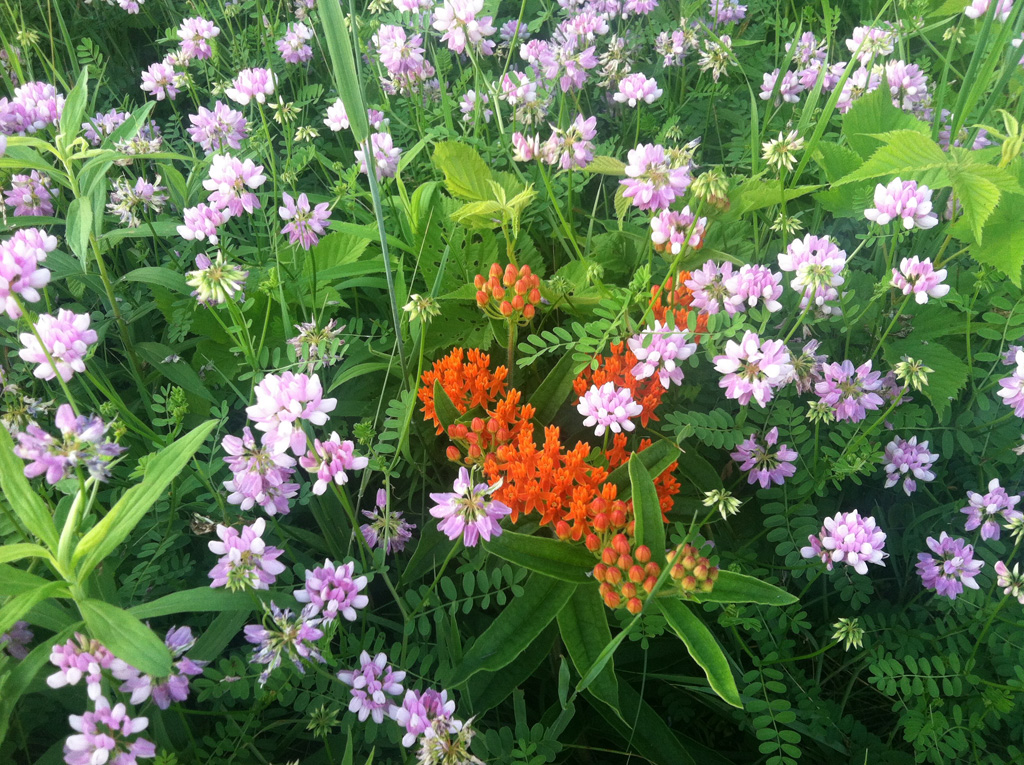Around the end of June, this orange flower begins to appear in better fields and pastures throughout the US midwest. Its striking vibrance often causes people to stop in their tracks and wonder, aloud, about exactly what it is.
Butterfly weed, Asclepias tuberosa, is a variety of milkweed. Those who are more familiar with purple milkweed will recognize some similarity in the oblong leaves, even if the orange flower is opposite the latter’s position on the color wheel.
Chromatically, standing in here for its purple cousin are the numerous light purple blossoms of crown vetch. Although this species is native to Europe and other parts of the world, its membership in the legume family is sometimes sought after for bringing nitrogen to a deficient pasture soil. In this case, since I know almost nothing about the history of this pasture, it’s hard to tell whether its presence is a result of intentional seeding, or its invasive qualities.
In Walden, Henry David Thoreau suggested that “a man is rich in proportion to the number of things which he can afford to let alone.” Butterfly weed, like purple milkweed, is most likely to appear when its pasture is not mowed, but simply left alone. While fallow fields do not contribute directly to the pecuniary wealth of our society, they support the foundation upon which that wealth can sustain relevance and value. Compulsive mowing of vacant parcels and side yards, in the absence of a distinct agricultural purpose, is one of the banes of our society — as it neither produces tangible value, nor returns value to the natural environment.
If you need an excuse to resist unnecessary maintenance of vacant lots or fields that would otherwise support pollinators and summer bouquets, then recast your seeming neglect as conspicuous evidence of wealth and self-determination, enough that, like Thoreau, you can afford to simply leave it alone.


